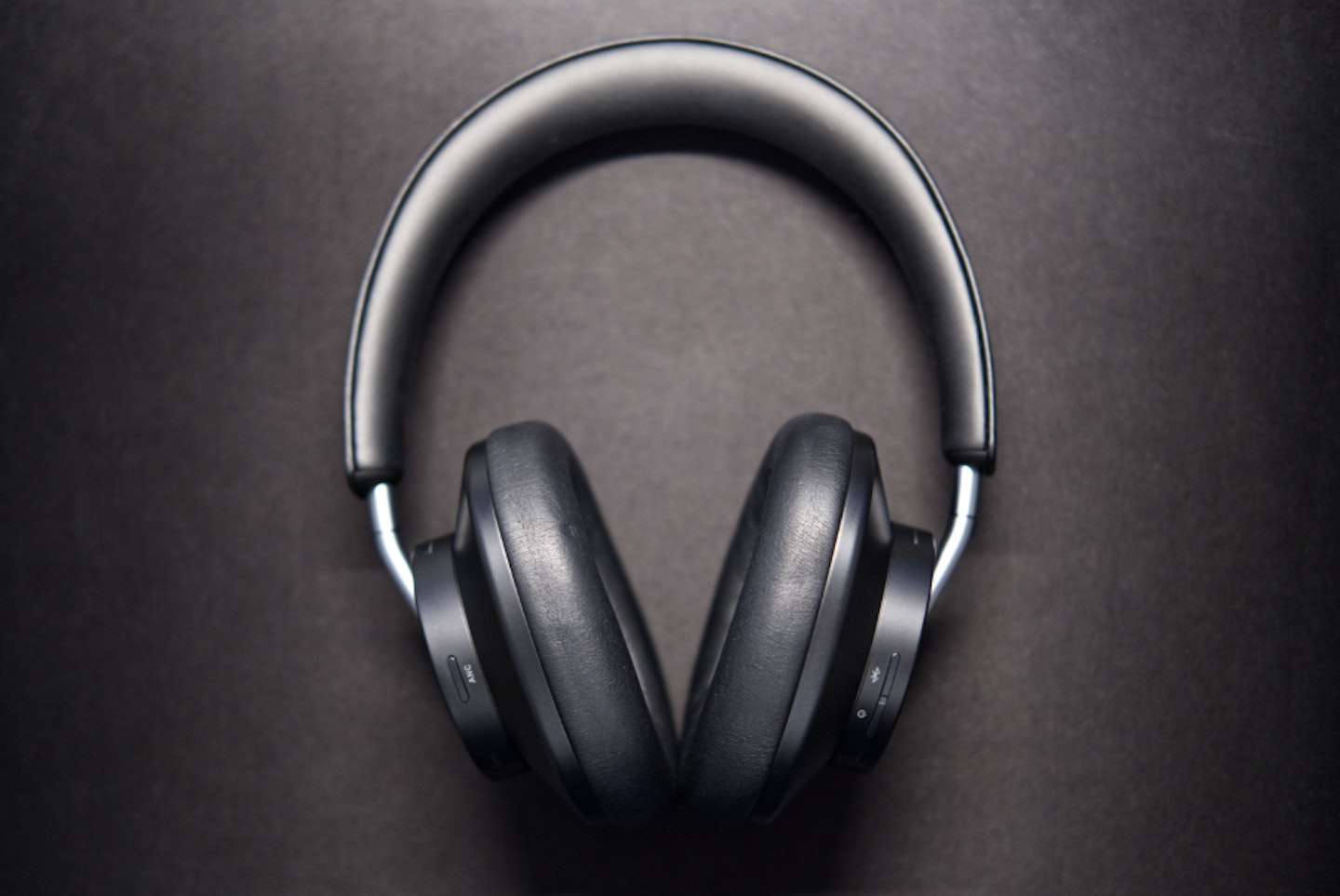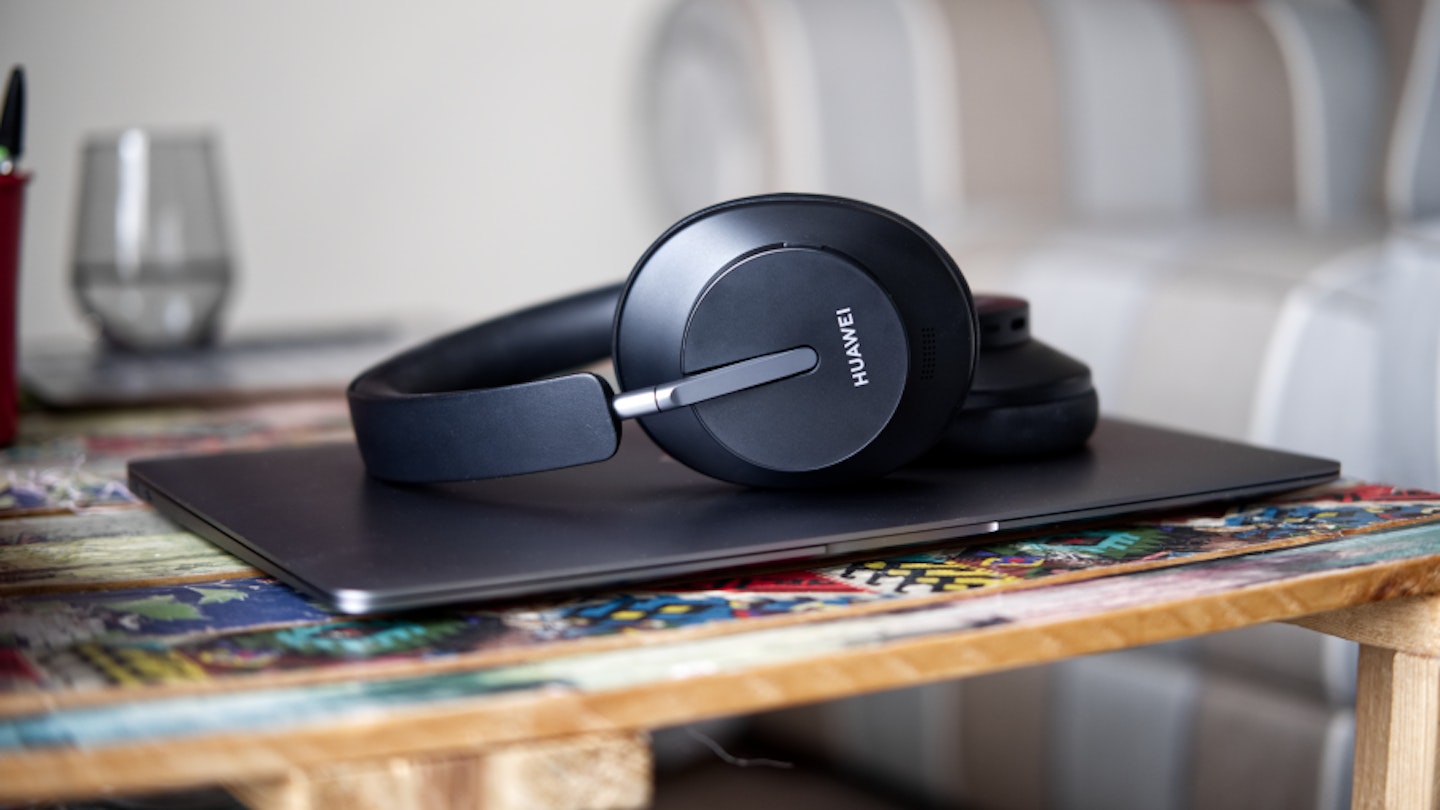The Huawei FreeBuds Studio are a mid-range product carrying a selection of desirable features that we love to see on our favourite headphones. In addition to drivers with impressive frequency ranges, there are innovative touch controls, several ANC modes and a 24-hour battery. But can they impress What’s The Best’s audio expert William Lobley? Read on for the full review.

| Specifications | |
|---|---|
| Connection: | Bluetooth 5.2 |
| Features: | ANC, hear-through, touch controls, wear detection |
| Drivers: | 40mm, four-layer polymer |
| Battery: | 410mAh |
| Runtime: | 24 hours (no ANC) |
| Charge time: | 8 hours from 10min charge |
| Weight: | 260g |
| Pros | Cons |
|---|---|
| • Precise audio | • Average battery |
| • Effective ANC | • Occasionally temperamental initial Bluetooth connection |
| • Nice design | • Broken app |
Verdict: With a combination of well-executed controls, precision audio and effective ANC modes, the Huawei FreeBuds Studio makes a very neat package. It’s a shame that the app and initial Bluetooth connection fall short.
Jump to:
Build

• Light but sturdy
• Smart and understated
• Impressive 40mm drivers
Weighing a portable 260g, the Huawei FreeBuds Studio headphones are lightweight but carry a sturdy build. Constructed with an efficient combination of plastics and aluminium, the headband, adjustment arms and earcups all work together to create a tight and streamlined product. Comfort is provided via soft padding and supple faux leather in the ear pads and central two-thirds of the headband.
The Huawei FreeBuds Studio comes in either Graphite Black or Blush Gold. I tested Graphite Black, which is made up of matte black faux leather and plastics. A matte graphite finish is used on the aluminium adjustment arms for a small dash of flash. It’s smart and understated.
Under the exterior of the FreeBuds Studio sits a bunch of essential technology. For audio, the FreeBuds Studio uses 40mm drivers with an impressive 4Hz to 48kHz frequency response range. Also crammed inside the earphone shells are touch controls, six noise-cancelling microphones, Bluetooth 5.2, wear detection sensors, hi-fi codec and a 24-hour battery (with ANC switched off).
Related: The best portable Bluetooth speaker | Best bone conduction headphones
Usability

• Intuitive touch controls
• Quick-acting wear detection
• 24-hour battery (without ANC…)
On the whole, the Huawei FreeBuds Studio headphones are very easy to operate in day-to-day life.
The right earcup is home to the power button, Bluetooth control and USB-C. On the left, there’s only one button: the ANC control. This switches between noise-cancellation, hear-through and deactivated modes.
The exterior of the right earcup carries touch controls that can detect taps and swipes, each controlling playback, phone calls and smart assistant activation (left/right for skipping, up/down for volume, two-second hold for assistant). The inclusion of intuitive swipe controls for controlling volume and skipping tracks is a real treat and a far better system than other brand’s cryptic combinations of taps.
Huawei has also included a wear detection feature, which automatically pauses playback when one of the headphone cups is lifted from the ear and resumes when it’s returned. This is by no means a feature unique to the FreeBuds Studio, but I found it to be reliable and quick-acting.
Frustratingly, “reliable and quick-acting” cannot be applied so freely to establishing a Bluetooth connection. Throughout testing, I encountered moments where Bluetooth connections struggled to re-establish themselves when powering the headphones on. You can fix this glitch by spending a few seconds in a device's Bluetooth menu, but it's still a disappointing fault to find on a Bluetooth 5.2 device in 2021. Happily, once a connection is made, it remains strong and latency-free throughout the day.
The battery is charged via the USB-C connection and boasts a quick-charge feature that will see an empty battery hitting full charge in only one hour. The FreeBuds Studio’s battery carries a hefty 24 hours of music playback, though this does drop to only eight hours with the ANC active.
Oddly, despite the FreeBuds Studio manual recommending a companion app - called Huawei AI Life - the software has no support for the headphones. Though I do not feel that this fault hampered by overall experience with the headphones, it's a little strange to think that somewhere out there in the great internet-ether, there are some extra features I’d be able to control.
Related: Tribit StormBox Pro review | EarFun Air Pro Wireless Earbuds review
Performance

• Precise audio
• Effective ANC modes
There are plenty of marketing terms floating around the Huawei FreeBuds Studio: four-layer polymer, 4Hz to 48kHz frequency response, L2HC high-resolution codec. This is all well and good, but what matters is how this translates into an actual listening experience. And it’s good news, because the FreeBuds Studio sound, well, lovely.
First and foremost, the headphones deliver a nice and clean audio performance. At all volumes, and across all frequencies, there's a neatness to the sound that's pretty darn delightful. Bass, mids and highs are all given space and treated with consideration, allowing everything to be heard without fault.
House tracks like Bicep’s "Atlas" carry a nice enough bass, while the higher synths are well spread, lending it a really immersive quality. Likewise, the jittery background keys of New Order’s "Blue Monday" have never sounded better or more present. Things are handled well when things get a little more raucous, too, with the catalogues of Frank Carter & The Rattlesnakes and Idles showcasing how lots of noise doesn’t mean losing vocals or nuance in the mix.
It could be said that this dedication to audio accuracy comes at the cost of life and energy - a claim levelled at digitally delivered music more widely, too. While it’s true that there is a clinical precision at work here, for headphones that are intended for general purpose, this realism and accuracy is a real strength.
Elsewhere in the FreeBuds Studio feature set, the performance is just as strong. The Active Noise Cancellation is well delivered, cutting out a decent amount of background noise without ever straying into the occasionally unnerving territory of vacuum-like silence. The hear-through mode is also of a good standard, keeping you in touch with your surroundings without becoming a distraction or too much a detriment to music playback.
Price
The full retail price of the Huawei FreeBuds Studio headphones is £299. At the time of writing, the headphones are available directly from Huawei for £199.99, and are listed on Amazon UK for prices between £229 and £140.
This is a highly competitive price range hosting a very compelling array of similar noise-cancelling headphones. Through my experience testing other headphones, I would say that the Jabra Elite 85h sit as the main rival to the Huawei FreeBuds Studio.
Verdict

The marketplace is saturated with ANC-laden Bluetooth headphones, and because of this, it can be difficult for a new offering to attract some excitement. Against the odds, Huawei has managed to capture my attention with the FreeBuds Studio.
With a combination of well-executed controls, precision audio and effective ANC modes, the Huawei FreeBuds Studio makes a very neat package. While I still hold some disappointment with the Bluetooth’s inability to instantly reconnect with devices and the lack of app support, the time I’ve spent with the FreeBuds Studio has been one of absolute enjoyment.
| Pros | Cons |
|---|---|
| • Precise audio | • Average battery |
| • Effective ANC | • Occasionally temperamental initial Bluetooth connection |
| • Nice design | • Broken app |
